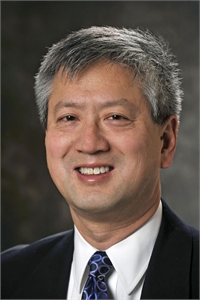Abstract: There is continuing interest in increasing the power and improving the beam quality of laser sources for a variety of applications including materials processing, pumping, power transmission, and illumination. One approach is to continue to develop improved lasers with higher power and good beam quality. Another approach, particularly relevant to semiconductor and fiber lasers, is to beam combine large arrays of lasers. Beam combining has become increasing viable over the past decade as the community has developed a better understanding of the requirements imposed by beam combining, and various implementations have been successfully demonstrated in the laboratory. These implementations are beginning to see commercial application.
Key metrics for high-power arrays include the output power, the brightness, and the spectral width. To achieve high brightness, both high power and good beam quality are required. High-power diode arrays currently are composed of large numbers of emitters tiled side-by-side with the emitters being mutually incoherent with respect to each other. As the number of array elements increases, the beam quality decreases, and the brightness can be no better than that of an individual element. This is known as side-by-side beam combining. Polarization beam combining is often used to combine two arrays of orthogonal polarization. This can increase the brightness a factor of 2 at best.
There are two approaches, wavelength beam combining (WBC) and coherent beam combining (CBC), to scaling the brightness by large amounts, in principle by as much as the number of elements. In WBC, the array elements operate at different wavelengths and a dispersive optical system is used to overlap the different wavelengths spatially. Typical dispersive optical systems use gratings, prisms, or wavelength-selective reflectors. This is equivalent to what is done in wavelength division multiplexing for optical communications. The differences here are that the goal is higher power, and, therefore, the efficiency is more important. In CBC, the beams are interferometrically combined, or phased. If the beams are phased properly, then constructive interference occurs and the power can be combined into a single beam.
This tutorial will cover the fundamentals of laser beam combining, including requirements on the array elements, basic scaling laws, and implementations. Examples from the literature will be used to show the progress being made.
Biography: Tso Yee (T. Y.) Fan is the Associate Leader of the Laser Technology and Applications Group at MIT Lincoln Laboratory, Lexington, MA. He joined MIT Lincoln Laboratory as a Staff Member in 1987. He is widely recognized in the laser community for his pioneering work in diode-pumped solid-state lasers, in advances in cryogenic lasers for improving average-power scalability, in characterization of laser and nonlinear optical materials, and in advances in laser beam combining.
Dr. Fan is a Fellow of the Optical Society of America and a Senior Member of the Institute of Electrical and Electronics Engineers. He served as an Elected Member of the IEEE/LEOS Board of Governors from 1994-1996 and was the Topical Editor, Lasers for Optics Letters from 1994-1999. He received the 2009 MIT Lincoln Laboratory Technical Excellence Award for his work on Yb lasers, cryogenic lasers and laser beam combining and the 2011 MIT Lincoln Laboratory Best Invention Award. He is a co-recipient of the Berthold Leibinger Innovationspreis 2012, first prize.
Dr. Fan received the S. B. degrees electrical engineering and materials science and engineering from the Massachusetts Institute of Technology (MIT), Cambridge, MA, and the M. S. and Ph. D. degrees in electrical engineering from Stanford University, Stanford, CA.


